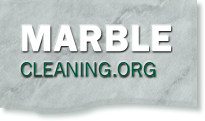| Home » Categories » Natural Stone Q & A’s |
chips in Travertine floor tiles |
| Article Number: 500 | Rating: Unrated | Last Updated: Wed, Sep 19, 2007 at 12:00 AM |
|
The polished surface of several Ivory Travertine tiles installed within six months in the main lobby of a new public library is chipped/pitted. The chips are in veins / occlusions in each instance. The chips were not present at the time of installation. Is this normal and if so, what is the recommended repair procedure. I would also appreciate your advice for scratch removal and regular maintenance; cleaning, polishing, sealing if recommended, etc. Thank you.
Dear
I must assume that by chipped/pitted you mean that some holes have opened up.
Travertine is naturally full of holes and the factory fills them with a cementitious material. Depending on the factory, the grading of the tiles and the quality of the cementitious material used to fill, sometime some of the filler comes off under foot traffic.
The easiest, yet very effective way to refill those holes pretty much permanently is to fill them with color-matching caulking (almond in this case). Squee
About the sealing, polished travertine is too darn dense to take any impregnator (a.k.a. sealer) in. In other words it can't be technically sealed and it will never stain.
As for routine maintenance, considering that's a high-traffic floor, nothing beats MB-8 and its team mate MB-10! Inexpensive to use, easy to apply and to maintain, it will never need stripping if managed right, and it will look so natural that not even a trained eye will ever be able to tell that there's anything sitting on that stone!
The skill requirement is plain decent janitorial and the means are a microfiber mop and a 1500 RPM burnished with a hog-hair burnishing pad. Using MB-1 for routine cleaning is also recommended.
But you'd better start a.s.a.p.: the products I listed for you are for preservation of the original finish. If you let the floor get damaged by foot traffic, those products will work great at preserving the… damage!!
L
May I ask you now to please read and e-sign our Statement of Purpose at:
http://www.marblecleaning.org/purpose.htm?
J
Ciao and good luck,
|
Attachments

There are no attachments for this article.
|
Comments

There are no comments for this article. Be the first to post a comment.
|
Installation of Slabs of Travertine on walls.
Viewed 0 times since Sun, Dec 9, 2007
Laying lots of slate-now what?
Viewed 0 times since Wed, Feb 13, 2008
removing Sharpie marks on granite.
Viewed 0 times since Sun, Jul 15, 2007
Lemon Jiuce test on black galaxy
Viewed 0 times since Sun, Dec 30, 2007
marble cleaning
Viewed 0 times since Sat, Aug 1, 2009
kitchen countertop
Viewed 0 times since Tue, Sep 18, 2007
Bluestone as countertop
Viewed 0 times since Wed, Feb 6, 2008
Cracks and chips in new Thassos floor
Viewed 0 times since Fri, May 30, 2008
SeaFoam Granite
Viewed 0 times since Sun, Apr 6, 2008
Shelf life for Granite Sealer for Kitchen
Viewed 0 times since Sat, Apr 5, 2008
|
| KB Home | Advanced Search | Ask Question |
|
| Ask Your Natural Stone Questions |  |
|
|
|

 Add Comment
Add Comment